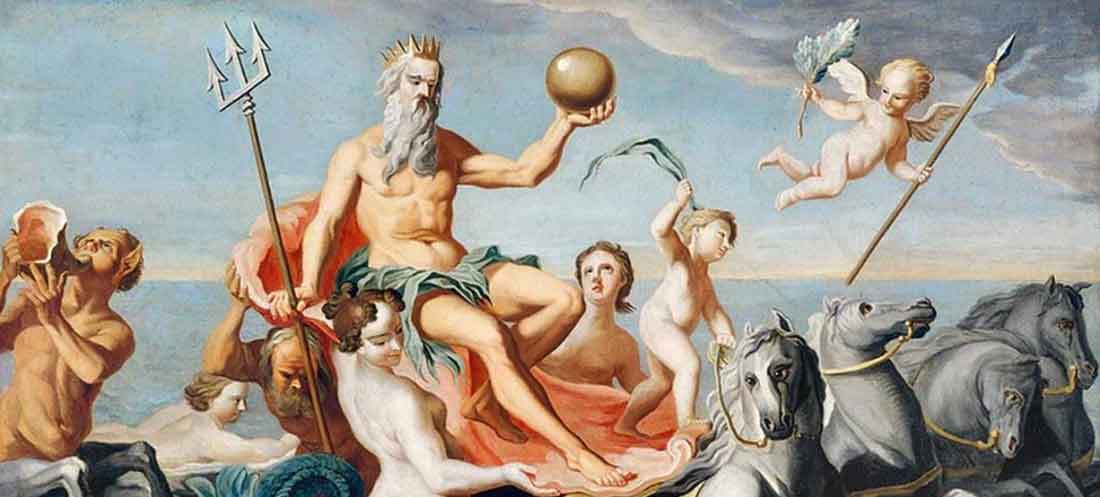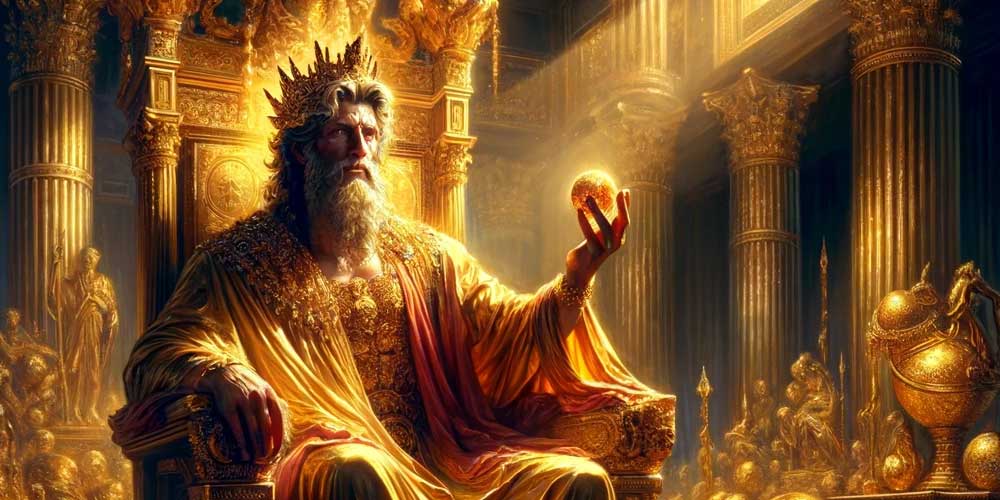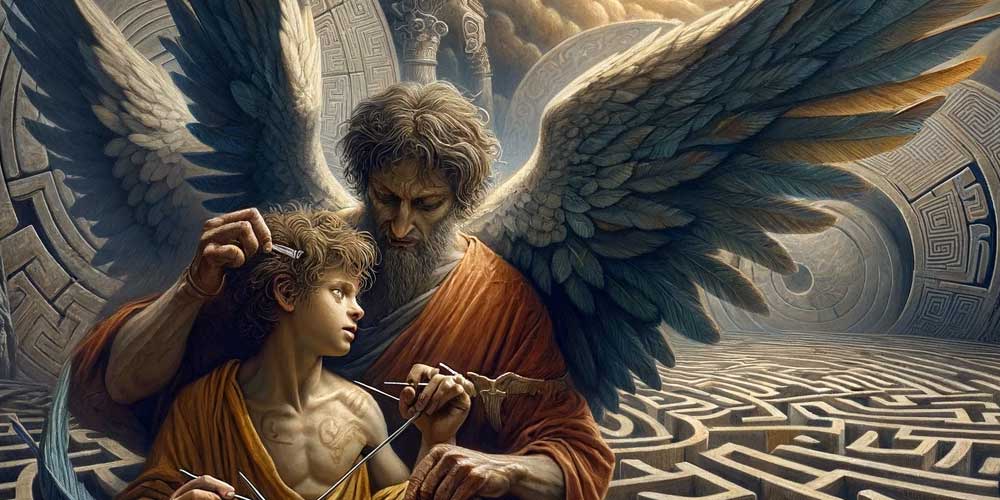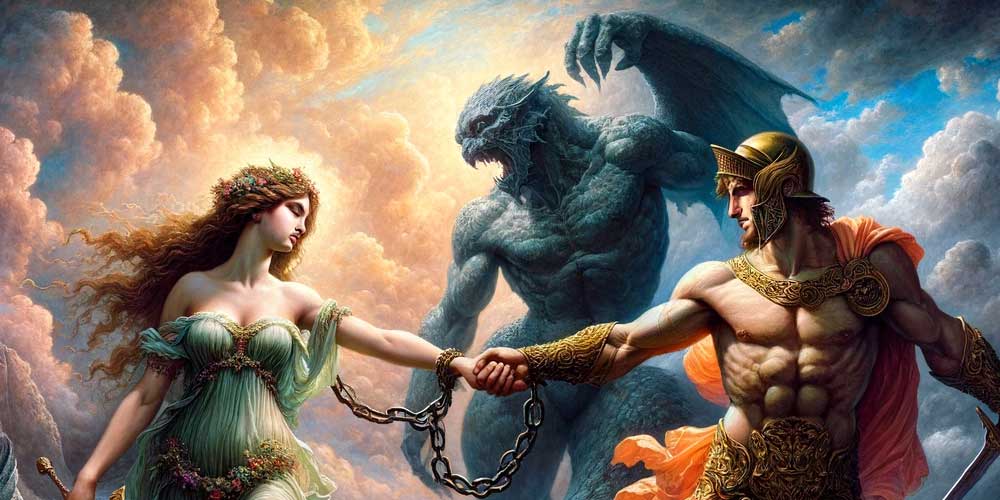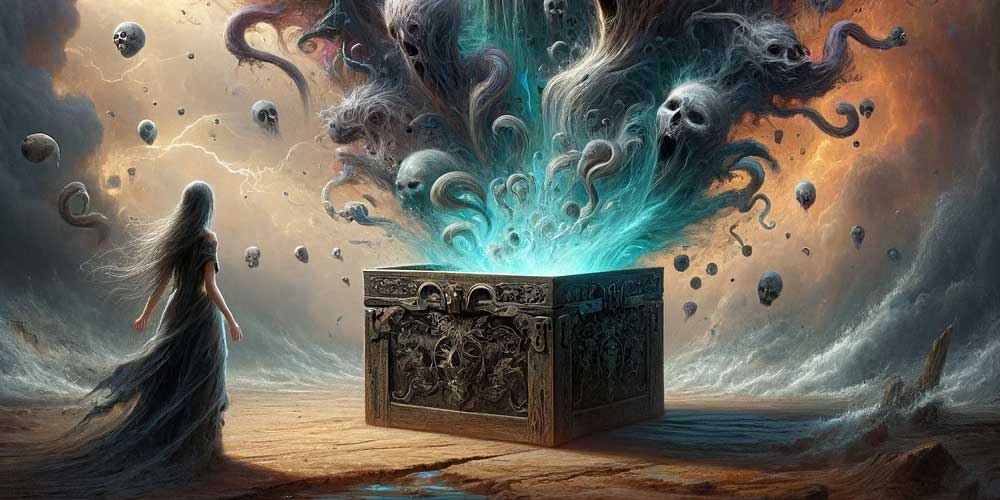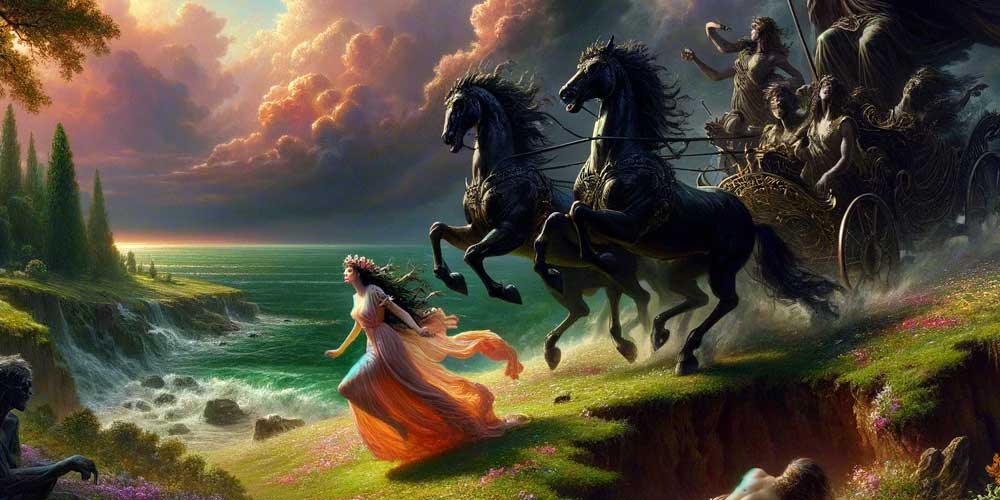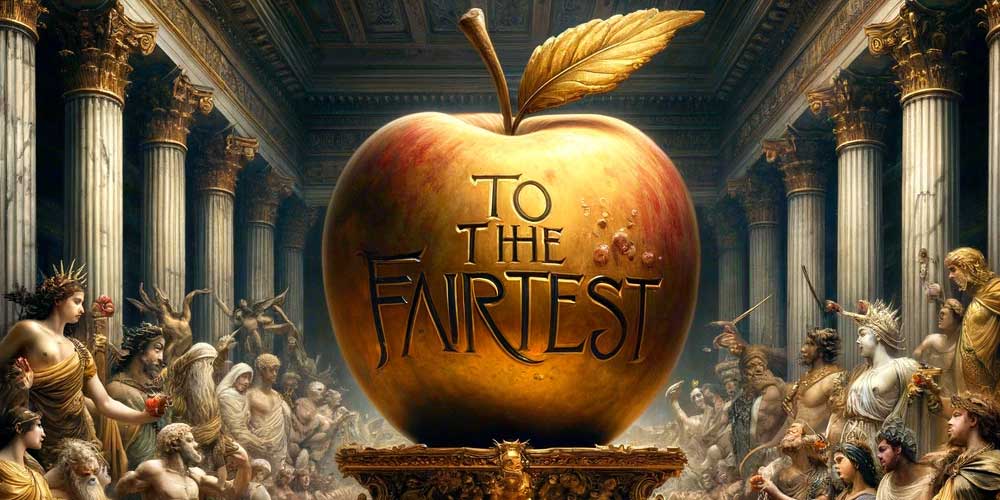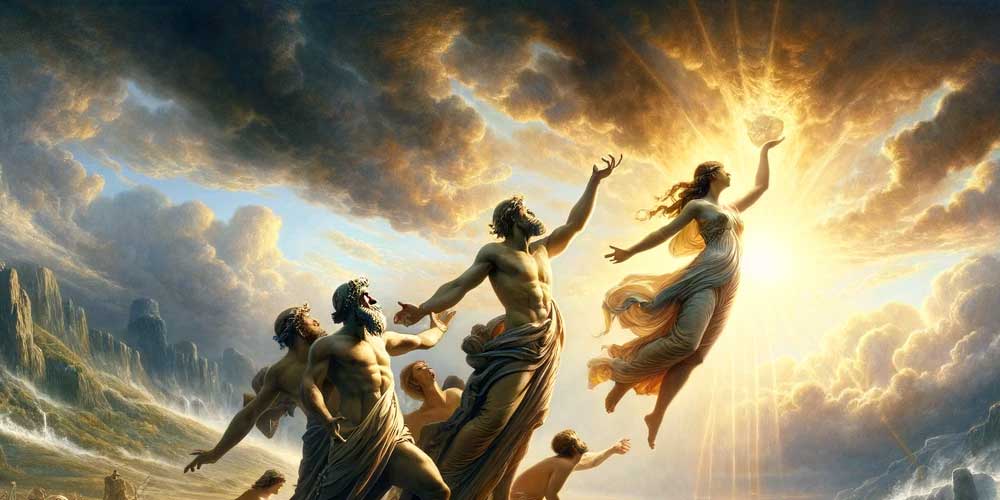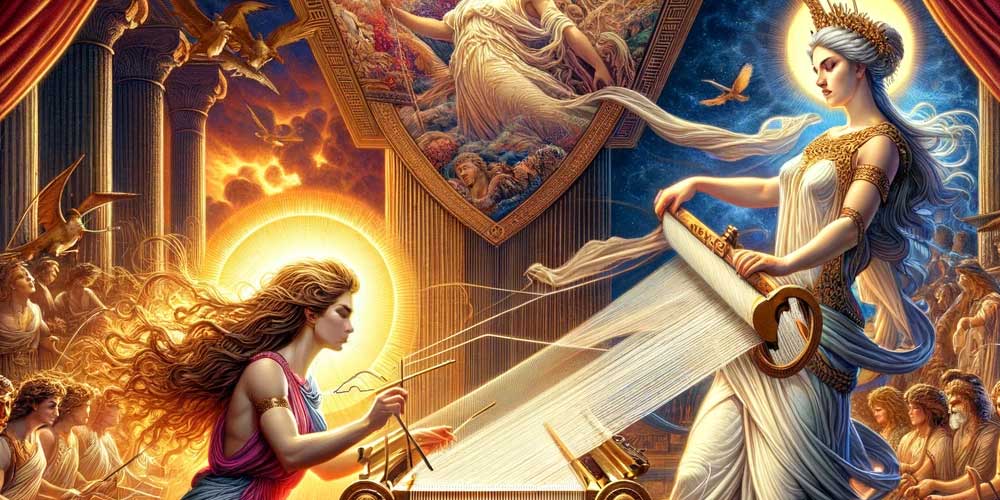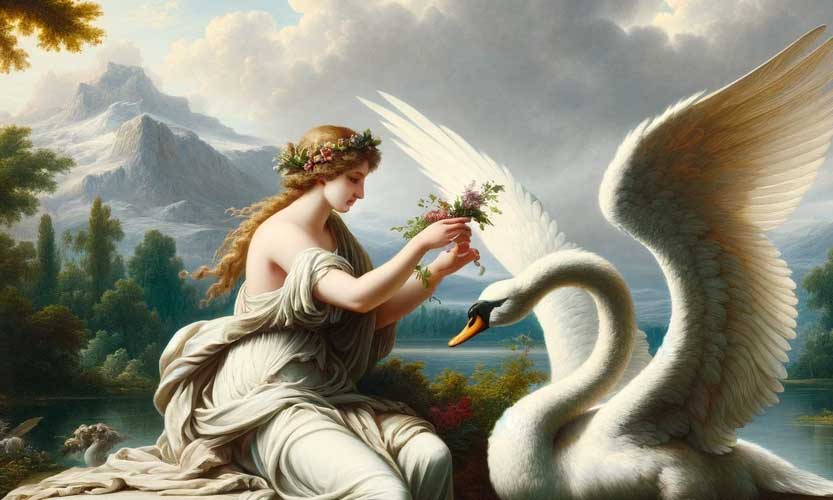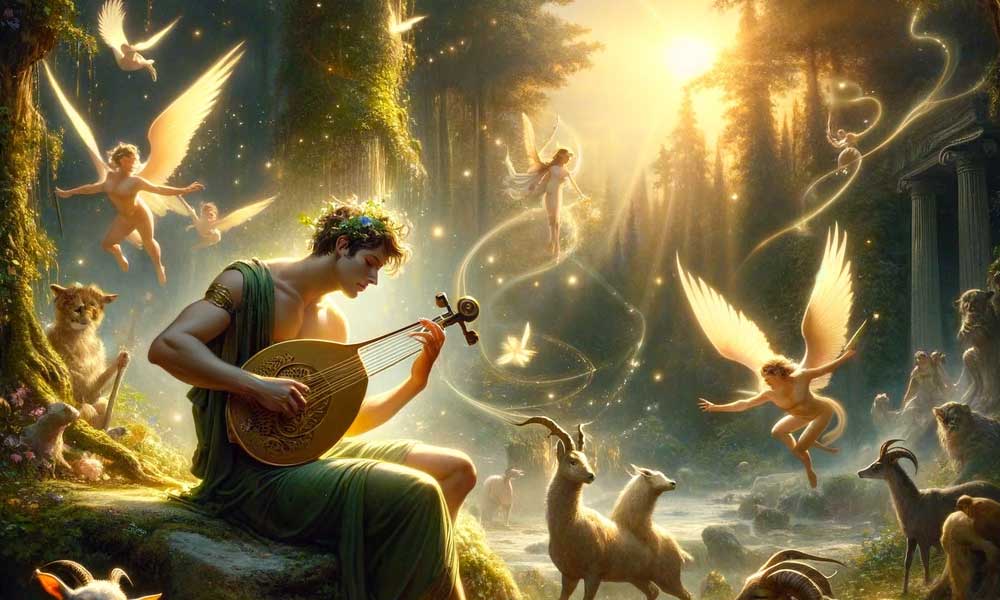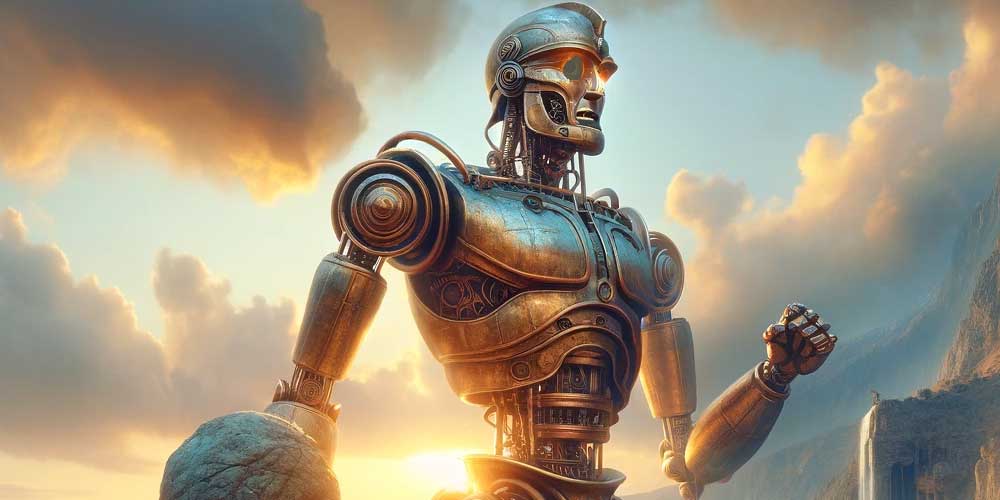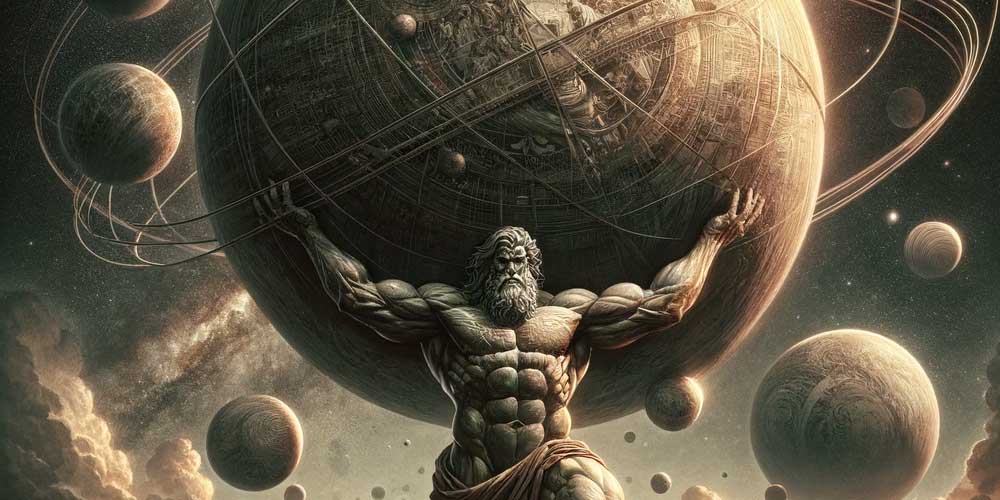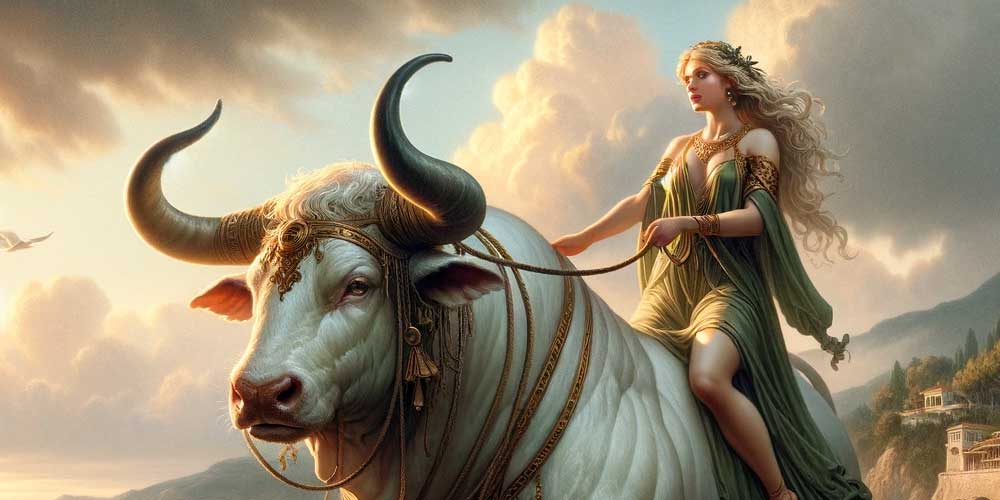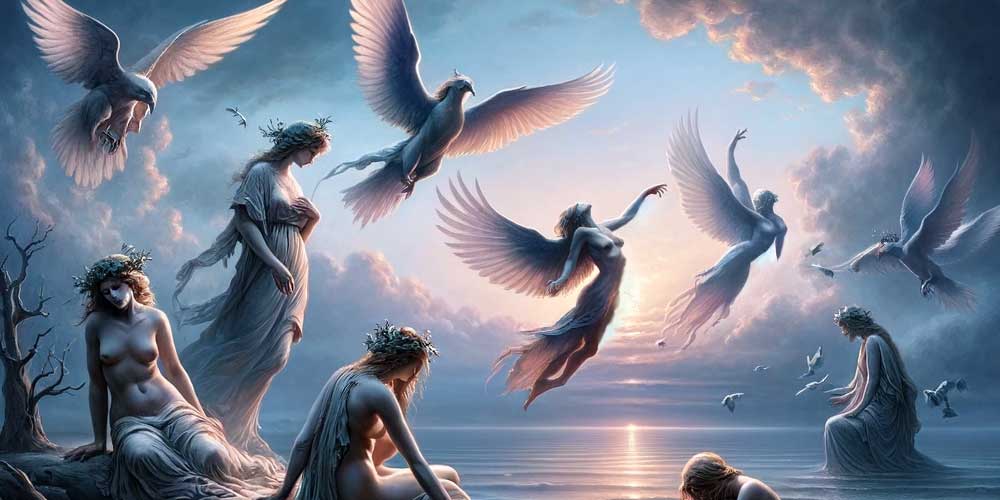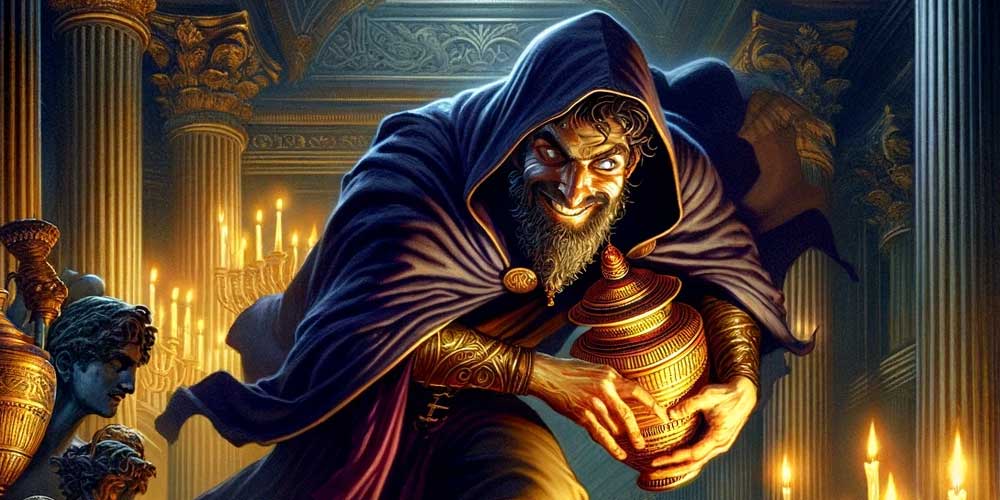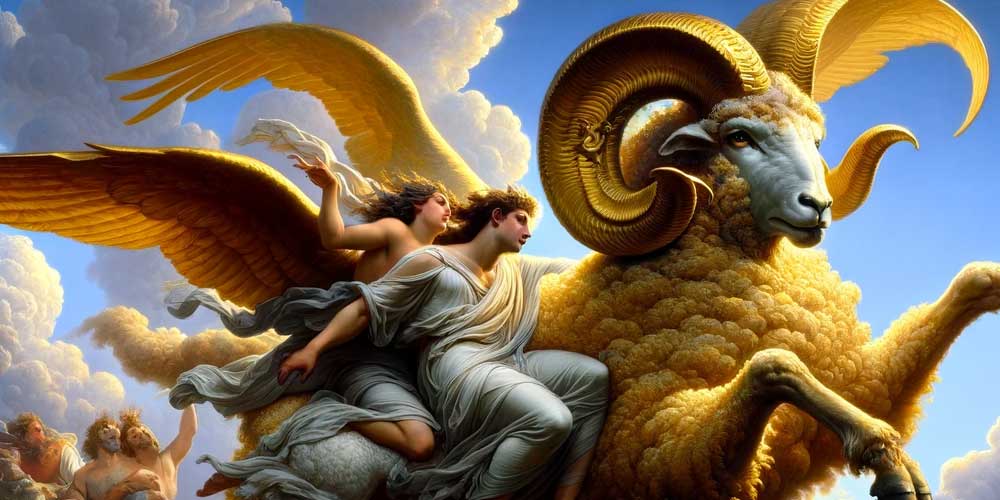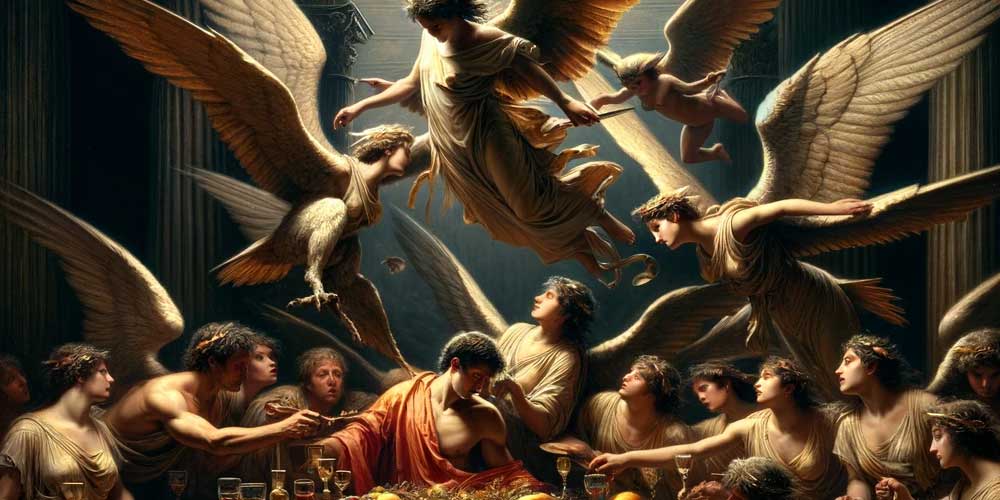Introduction to Greek Mythology
Greek mythology expresses neither unity nor consistency. The lack of coherence is due to the several factors that went into the formation of Greek myths and mythological personages. First, the existing fragments of Greek myths cover a period from the 2d millennium to the beginnings of the Christian era.
These myths and fragments of myths are in many cases parts of total mythological cycles in local communities, but in many cases the entire cycle is not known today.
Second, the corpus of Greek mythology contains mythological elements from different cultures and histories. For example, the Indo-European cultural element is represented in deities such as Zeus, whereas the Minoan-Mycenaean structures of Aegean civilization are symbolized by figures such as Demeter, Aphrodite, Rhea, and others.
Complicating the problem even more is the fact that Greek poets, tragedians, and philosophers present their own literary and philosophical interpretations and dramas of the deities, making use of the many strands and varied traditions of the mythological cycle
People, young and old, always loved telling the stories of Greek mythology. They told them long before they were able to grasp the script, and since then, they have never stopped telling them.
In the cold countries of the north, they tell the stories, near the fireplace. But in the south and warm countries that do not know winter, they say them in the countryside, during the long warm nights. From an island to an island, to the Aegean, to the Ionian, passed the fable tellers, following the winding trails on the mountain slopes of Crete and the Peloponnese.
They traverse as far as Asia and the Black Sea coasts. Eagerly welcomed in the villages. There is no feast at the fairs without their voice being heard. There is a place for them even in the races, where young people compete in power, stumble, throw the javelin, stretch the bow, or walk by riding chariots.
When everyone is sweating from the summer heat and the cloud rises from the hooves of the horses and the runners and the larynx is all dried, then the rasps rise. And they start to say some old legend, accompanying their words with the lyre chords. So they have been passed down the years.
Eather peacefully or with violence the kings came and went in city states who are dead today. Tiryns, Mycenae, ancient Argos, Iolkos, Sparta and so many others.
In those times, everything was a useful material for fiction writers: the wars and the misfortunes in the families of the strong ones, the states that were destroyed or fled, all gave them the opportunity to create their stories. Nothing, in any place, was inexplicable from a legend, both the shape of a rock and the tradition in a sacrifice. Hearing them there was no mystery left anymore, even in the sky.
Greek mythology remains one of the richest and most influential mythological traditions in the world. Not only has it formed the foundation of ancient Greek religion and philosophy, but it has also permeated Western literature, art, and modern pop culture.
The mythology of Greece while rooted in the ancient world, continues to resonate with modern audiences because of its universal themes and characters. Scientific interpretations, especially from psychology, sociology, and anthropology, provide avenues to delve deeper into these myths, transcending their fantastical elements and revealing the profound human truths they encapsulate.
Greek mythology is populated by a pantheon of deities, each governing different aspects of the world and human experience. The twelve Olympians, led by Zeus, are the principal gods.Figures like Hercules, Achilles, and Odysseus embarked on epic quests, showcasing human strengths and weaknesses. Their tales often intertwine with the lives of gods and other mythical creatures.
Ancient Greek mythology belongs to the common cultural heritage of those who belong to the western civilization. In order to understand, and in fact briefly and concisely, we say that a woman is jealous like Medea, that she is faithful like Penelope, a man is as resourceful as Odysseus,we talk about the Oedipus complex or the Electra complex, for later antiquity writers and visual artists based on their fiction by persons and events of ancient Greek mythology. Mythology and mythical persons seem to form a common heritage and a common ground of conciliation and communication.
However, what exactly we know about the persons mentioned above and more generally, about myths and where do we get our knowledge from, are the primary sources, the epics of Homer, Hesiod, the tragic poets, the mythographers, the angiography, the great works of sculpture and the figurines
The complexity of Greek Mythology
The complexity of Greek mythology begins with its cosmogony, as recounted in Hesiod’s “Theogony.” The mythological universe starts with Chaos, a primordial void, from which arose Gaia (Earth), Tartarus (the Abyss), and Eros (Desire). These primordial beings gave birth to other deities, creating a complex genealogy of gods and titans. The successive generations of gods, each with their own powers, domains, and conflicts, form a layered and interwoven family tree. This intricate cosmogony sets the stage for the elaborate myths that follow, where the relationships and rivalries among deities mirror the complex nature of the cosmos itself.
Convoluted Relationships and Narratives
Central to this complexity are the intricate relationships among gods, heroes, and mortals. These relationships often involve convoluted family ties, love affairs, and epic battles, creating a dense web of interconnected stories. Zeus, the king of the gods, is at the heart of many myths, his numerous affairs with both goddesses and mortal women resulting in a plethora of offspring, each with their own stories and significance. For instance, Heracles, born from Zeus’s union with Alcmene, embarks on his famous twelve labors, each a tale of immense challenge and heroism that connects to the broader mythological landscape.
The intergenerational conflicts among gods add another layer of complexity. The Titanomachy, the war between the Titans and the Olympian gods, and the subsequent Gigantomachy, the battle between the gods and giants, illustrate the ongoing struggle for power and dominance in the divine realm. These epic battles are not isolated events but are deeply intertwined with the fates of mortals, influencing human history and culture as depicted in various myths.
The complexity is further enriched by its exploration of profound themes such as fate, justice, and the human condition. The theme of fate, or moira, is pervasive in Greek mythology, underscoring the inevitability of destiny. The myth of Oedipus, who is doomed by prophecy to kill his father and marry his mother, highlights the inescapable nature of fate and its tragic implications. Similarly, the story of Perseus and Medusa delves into themes of destiny and heroism, with Perseus’s journey and ultimate triumph being guided by divine intervention and prophecy.
Justice and retribution, embodied by the concept of nemesis, are also central to Greek mythology. The myths often portray the gods administering justice, punishing hubris and rewarding piety. Prometheus’s punishment for defying Zeus and bringing fire to humanity exemplifies the severe consequences of challenging divine authority. These narratives reflect the ancient Greeks’ views on morality, justice, and the balance of power between gods and humans.
In reflection of Greek Culture and thought it mirrors the intricate and multifaceted nature of Greek society and philosophy. The myths served as a means of exploring and understanding the world, providing explanations for natural phenomena, human behavior, and societal norms. They were not merely stories but were integral to the Greeks’ religious practices, cultural identity, and philosophical inquiries.
Philosophers such as Plato and Aristotle engaged with mythological themes, using them to illustrate and explore philosophical concepts. Plato’s allegory of the cave, for instance, draws on mythological imagery to convey profound ideas about reality and perception. In this way, Greek mythology transcended mere storytelling to become a foundational element of Greek intellectual and cultural life.
Adaptation to the Greek culture
Mythology has changed over time to adapt to the evolution of Greek culture. The first inhabitants of the Balkan Peninsula, who were agricultural populations, had attributed a spirit to every natural phenomenon. Over time, these vague spirits took on human form and became part of mythology as gods and goddesses.
During the descent of tribes from the north, came a new divine pantheon, based on conquest, strength, bravery in battle and heroism. Older deities of the agricultural world were assimilated by stronger ones or completely discredited. Modern researchers attribute interpretations and symbols of our time to ancient Greek myths.
Many see the transition from an older matriarchal society to another patriarchal one that succeeds it, through the myths of the Atreides, the Amazons, etc. Already existing myths, such as that of Achilles and Patroclus, also joined a similar pattern. The adaptation of the stories of Greek mythology was a common phenomenon, first introduced by the Alexandrian poets and continued after all the writers of the early Roman Empire.
The achievement of epic poetry was to create historical circles, and consequently to develop a concept of mythological chronology. Although contradictions in the stories make an absolute dating impossible, it is almost possible.
Hesiod’s Theogony
Theogony, attributed to the poet Hesiod, is a narrative poem that traces the origins and genealogy of the Greek gods. Written around the 8th century BCE, it is one of the earliest sources of Greek mythology. The poem consists of approximately 1,022 lines and is composed in dactylic hexameter, the traditional meter of Greek epic poetry.
Theogony begins with an invocation to the Muses, daughters of Zeus and Mnemosyne (Memory), who inspire Hesiod to recount the origins of the gods. The poem proceeds to describe the primordial entities: Chaos, Gaia (Earth), Tartarus (the Abyss), and Eros (Love). From these entities, a complex genealogy unfolds, detailing the births of various gods, Titans, and other mythological figures.
A central theme in Theogony is the creation of the cosmos and the genealogy of the gods, outlining how order emerges from chaos through the succession of divine rulers. The narrative focuses on the transfer of power among the gods, from Uranus to Cronus and finally to Zeus, highlighting themes of rebellion, conflict, and the establishment of divine order. Hesiod establishes a clear hierarchy among the gods, with Zeus as the supreme ruler, reflecting the Greek view of a structured and ordered universe governed by divine authority.
Theogony is significant for several reasons. It provides a foundational account of Greek religious beliefs and practices, offering insights into the origins and relationships of the gods worshipped by the ancient Greeks. The poem influenced later Greek literature and Roman mythology, shaping the portrayal of the gods in works by poets such as Ovid and Virgil. Moreover, it reflects the values and worldview of ancient Greek society, emphasizing themes of order, power, and the divine.
While the age of the gods is usually of more interest to modern students of myth, Greek writers of the archaic and classical eras had a clear preference for the age of heroes. For example, the Iliad and the Odyssey overshadowed the divinely inspired Theogony and the Homeric Epics in both extent and popularity. Thanks to Homer’s influence, the “worship of heroes” leads to a reconstruction of the spiritual life, which separates the gods from the divine heroes, the Olympians and the Chthonians.
In Works and Days, Hesiod distinguishes between four generations (or tribes) the history of man: the golden, the silver, the bronze, and the iron age. These generations (or races) are separate creations of the gods corresponding to times. Thus, the golden generation corresponds to the rule of Saturn, while the next ones, to the kingdom of Zeus.
Hesiod inserts the generation-era (or race) of the heroes immediately after the Bronze Age. The last age is, according to the poet, the Iron Age, during which he himself lived. The poet considers it the worst and explains the presence of evil through the myth of Pandora. In Metamorphoses, Ovid follows Hesiod’s theory of the four seasons.
The Homeric Epics: The Iliad and The Odyssey
The Homeric epics, The Iliad and The Odyssey, are attributed to the poet Homer and are believed to have been composed in the 8th century BCE. These epic poems, also written in dactylic hexameter, are central to the Greek literary canon. The Iliad focuses on the Trojan War, specifically the conflict between the Greek hero Achilles and the Trojan prince Hector. It consists of 24 books and spans approximately 15,693 lines. The Odyssey follows the journey of Odysseus as he returns home from the Trojan War. It also consists of 24 books and spans approximately 12,109 lines.
Both epics emphasize the values of heroism, honor, and glory. The characters strive to achieve kleos (glory) through their actions, reflecting the Greek heroic code. The gods play a significant role in both epics, influencing the events and outcomes of human affairs, with the interplay between fate and divine intervention being a recurring theme. The Iliad focuses on the brutality and glory of war, while The Odyssey explores themes of homecoming, peace, and reconciliation. Additionally, The Odyssey is a tale of adventure and transformation, as Odysseus encounters various challenges and grows as a character through his journey.
The Homeric epics are significant for several reasons. They are considered masterpieces of ancient literature, showcasing the poetic and narrative skills of Homer. Their influence extends to Western literature, inspiring countless works of poetry, drama, and fiction. The epics were central to Greek education and culture, serving as sources of moral and ethical instruction, providing models of behavior and values for ancient Greeks. While not strictly historical, the epics offer insights into the Greek heroic age and the mythological framework that shaped Greek identity.
The first humans according the Greek Mythology
The first human beings were the children of Gaea and lived as subjects of Cronus. They were a perfect, golden race living in a Golden Age of peace and harmony, carefree, with no worries about old age, pain, misery or hunger. They lived on and enjoyed the plentiful fruits of the Earth, feasting on wild honey, wild fruits and fresh milk from goats and sheep.
All these good things, bestowed upon them by nature, they shared and their days were spent in continual joy and happiness and when death came to them, for they were mortal humans, it came like a peaceful sleep after which they became guardian spirits for the living. This Golden Age or Paradise is the first phase of existence from which man has now been excluded and can never return to.
After the golden race came the silver race. Unlike the former, the silver race was not perfect. During this Silver Age, the people lived as farmers and grew grain to make into bread which they then ate. They were feeble and, according to Hesiod, were too controlled by their mothers.
This was a matriarchal age, further symbolised by silver being the metal of the female Moon. In the later patriarchal age of Hesiod, such a community of ‘mother’s boys’ would have been seen as weak and feeble. Hesiod continues that these people of the silver race were not wise and did not honour their gods and, as a consequence, were destroyed by Zeus – the ruler at the time, who replaced them with the bronze race.
This new bronze race of men were cruel, heartless and warlike relishing violence and slaughter. They ate flesh as well as bread and their weapons, and artefacts were made of bronze. As a result of their violence, their time on earth was brutal and short, subdued by their own hands to sink into Hades.
They were followed by another nobler, heroic bronze race of warriors born from the union of gods and mortal women. This divine race of semi-gods and heroes took part in the voyage of the Argo and fought in the Trojan War. They all settled at the ends of the earth in the Elysian Fields, the final resting place of the souls of the virtuous and heroic, living forever without worries or fears.
From a modern perspective of this historic period, this first bronze race seems to point to the earliest Hellenic invaders of the region who were Bronze Age herdsmen and who would have held beliefs about a typically Indo-European sky god such as Zeus. The second race of bronze people could allude to the Mycenaean warrior kings who ruled in 1600-1100 BC and glorified the heroic, warrior ethos that is seen in the myths of Jason and Achilles.
The last generation of man is the iron race. This final race is depicted as cruel and unjust, its people suffering from a never ending existence of fatigue, hardships and worries. It is the Age in which Hesiod lived and he could say nothing good about them, stating that they lacked courage, honour, respect and any desirable virtue at all. From the perspective of the Mycenaeans this seems to describe the last wave of Hellenic invaders, the Dorians, who swept down from the north, conquering the Mycenaeans with their iron weapons.
Creation of the World

With his own grace, Uranus loves the Earth, gives her light and warmth, throws her in autumn and spring the warm rains that prepare the crops and the flowers. And the Earth gives him her love, making all the seeds germinate and the juice climbing on the branches.
To attract him, she changes tirelessly, the leaves on trees and shrubs are tenderly green at first with subtle nuances, reaching autumn their golden brightness. The Greeks never imagined that this beauty of the world came just from coincidence. And since people feel so well, Nature should have a similar soul to the human.
When Uranus and Earth came out of the void, monster creatures were exposed, huge mountains, oceans, flaming stars, started to make their way here and there. The continents did not have clear boundaries, the rivers often overflowed, flooding and destroying the plains.
The sun did not yet know how to follow a normal road that was far enough from the Earth in order not to burn it and close enough to warm her up and ripen the seeds she hid in her ground. It was the Chaos.
Uranus and Earth gave birth to six gods: the Titans. Their first was the Ocean. He was responsible for the vastness of the liquid element, which covers the Earth, similar to a protective zone. Another, Heperion, was caring for the sun. Their three brothers, Koius, Krieus and Iapetus, had less clear responsibilities since their birth. They are above all ancestors of future deities and races.
The Titans had assistants in their work the six Titanides, their sisters. The first-born, Tethya, went to mingle with the Ocean: for he is not only violence and anger.The sea is able to smile from time to time. There are the sea storms but there are as well the bright mornings and the calm waters. This is what Tithia brought to her brother. Something that without her, was missing a lot.
Close to Hyperion stood Theia, the mother of the Sun, the Moon and Ios. The Titan Koios got together with Phoebe, and by their union Leto was born. Two other Titanides were left without a companion: Themis and Mnemosyne. Themis is the Law, the Order, the Balance. In her, the forces of Chaos were subordinated, a condition essential to the presentation of organic life. Mnemosyne is the spiritual power, the memory of the Universe. Without it the world would never know from whence it came.
Greek Gods and religion
The ancient Greeks were polytheists meaning that they worshipped many gods and goddesses, These early Greeks believed that the gods watched over them and maintained order and harmony in the world. To this end, each god or goddess represented a single aspect of nature.
The ancient Greeks believed that most of the gods were like humans in form but immortal and far more powerful. This power meant that they could control all aspects of human life, determining when they were born and when they died, what fortunes or misfortunes would befall them and the kinds of relationships they would have.
The gods were not distant abstract beings but could be seen, heard and interact with mankind. In many ways they were the perfect humans – perfect in as much as they never suffered the mortal’s deprivations and prohibitions of life, pain or death, and could take their pleasures in whichever way they chose without feeling the need to control emotions, regardless if these emotions were positive or negative.
As a consequence, the gods did not always behave well. In essence, the ancient Greeks assigned to their gods all the attributes that they would like to possess themselves but without the controls that collective human behaviour imposed.
Among the many gods worshipped by these ancient people, the twelve gods who dwelt on Mount Olympus formed a special category of their own. These twelve gods are known by the Greek translation ‘Dodekatheon’ and they were worshpped as a group together in a common cult as well as individually.
Their lives were comfortable and luxurious and although their inability to control their lusts and passions often led to fierce arguments they would often carouse together with songs, dancing, love and laughter, feasting on ambrosia and drinking nectar – the sole sustenance of the gods.
Although all possessing magnificent powers there was one thing that they could never do. None of them should ever break the sacred oath that Zeus had made by the waters of the Styx. Styx was the daughter of Oceanus and Tethys, and was personified as the sacred river in the Underworld. She had been specially honoured by Zeus for the part she played in the Battle of the Giants.
If a god, who had sworn to keep a promise under this oath, broke his word they were doomed to be left without breath for one year and to spend the next nine years in isolation from the rest of the gods. The King of all the gods of the Dodekatheon was Zeus while Hera was the first in the rank of the goddesses.
Aside from these principal Olympian gods there were minor gods of the earth, sea, sky and the Underworld. These minor gods accompanied the twelve gods of Olympus and were worshipped by the humans according to their attributes.
According to Herodotus, Homer and Hesiod defined the gods. They drew from a rich and complex historical and mythological past, indicating themes and trends that have become decisive for the understanding of Greek mythology. Hesiod presupposes the reality of the gods, whereas Homer’s characterization of them is symbolic. In neither case, however, do the gods possess a universal meaning; in making use of the mythological historical tradition both poets tend to constantly merge various traditions into the unity of their forms of narration.
In the Iliad Zeus is referred to as the son of Cronus, but Cronus is given no other prominence, and Zeus is often called father of the gods. Zeus is often related to various female consorts at Eleusis his consort is Demeter at Thebes, Semele and at Argos, Hera.
Each one of these female deities is a symbol of earth and fertility. In Homer, Zeus is a reigning god who sits on a throne at the top of Mount Olympus. He is attended by his council of deities: Hera, Apollo, Poseidon, Artemis, and Athena. Each of these has his or her own dwelling on Olympus. The palace and walls were built by Hephaestus.
Hesiod’s Theogony gives another story of Zeus. It provides a genealogy of the birth of the deities. The first god was Uranus, who mates with Gaea, the earth, from this union, the Titans and Cyclops are born. The most important of these offspring is the Titan Cronus, who marries his sister Rhea. Cronus receives a prophecy that foretells his overthrow by one of his children; therefore when his children are born he immediately swallows them.
The distressed Rhea is advised by her parents to go to Crete when she becomes pregnant again. She does so and on Crete gives birth to Zeus. Gaea becomes nursemaid to Zeus and devises a stratagem to save him from his father. She wraps a stone in clothing and presents it to Cronus as his new son. Upon ingesting the stone,
Cronus disgorges it and all of the other children he had previously swallowed, including Hera, Poseidon, and Hades. Another element in the myth relates that the safety of Zeus is ensured by a group of divine beings called kuretes who dance around the young child, creating such a noise that the cries of the child cannot be heard by Cronus. This story of the birth of Zeus may be part of a chthonic religion that is related to the Mediterranean orgiastic traditions of Greece.
Zeus thus appears in the two mythological traditions, one Indo-European, the other Mediterranean (Aegean), as a sky-god belonging to invading Indo-Europeans. As the head of the pantheon he is symbolized by forms other than the sky, and through his marriages and amorous adventures he assimilates the indigenous deities to the Indo-European pantheon. The Titans may have been the ancient gods of the earth, and Hesiod’s myth blends the two traditions into a single narrative.
Hera (lady in Greek) is the great goddess of the indigenous inhabitants of ancient Greece before the Indo-European invasions. She symbolizes a matriarchal and polyandrous culture. As the great goddess, she annually takes a mate in a sacred marriage, a ritual enactment of fertility and the coming of spring. Zeus, the sky-god of the Indo-Europeans, marries Hera at Argos, and this marriage becomes the archetype for monogamous patrilineal marriage and kinship. Hera becomes the goddess of marital virtue. Hesiod’s version is that Hera was the sister of Zeus; when she is disgorged by Cronus, Zeus marries her.
Poseidon was originally an Indo-European deity and an elder brother to Zeus. He is often referred to as the producer of thunder but more often as the wild horse. In the time of Homer he was called earth shaker, and this name may be related to the sound of horses’ hooves.
Several stories tell of Poseidon’s mating with goddesses in the forms of mares. In Arcadia, Demeter changes herself into a mare and is chased by Poseidon; from their mating is born Persephone and a horse Arion. Poseidon then becomes a god of the sea when he mates with the sea goddess Amphitrite.
Dionysus is not an Indo-European deity. Probably Phrygian in origin, the god and his cult travelled to Macedonia, then to Thessaly and Boeotia. The myth of his birth relates that his mother is Semele and that he was fathered by Zeus. When Hera, Zeus’s wife, learns of Zeus’s infidelity and the approaching birth, she disguises herself as Semele’s nurse and convinces her to demand that Zeus reveal himself in the totality of his godliness to her.
Zeus appears to Semele in the fullness of his thunder and lightning. The appearance strikes Semele dead, but just before her death Zeus snatches Dionysus from her womb, cuts open his thigh, and places the child therein; after nine months Dionysus is born from the thigh of Zeus. Dionysus is called the twice-born from the womb of Semele and the thigh of Zeus.
Dionysus’s appearance always seems to be accompanied by some violent activity that presents a threat to conventional order. As the centre of an orgiastic mystical cult, he tends to break the bonds of social life. Euripides, in his drama The Bacchae, describes the Dionysian cult. (Dionysus is also called Bromios, the Boisterous, or Bacchus.)
The aim of the cult was to produce ecstasy the experience of standing outside of oneself or enthusiasm the experience of being filled with the god. The heart of the Dionysian mystery was that the devotee and the god become identical. The majority of the cult followers were women, the Maenads, those who had gone mad in their ecstasy. When the priest of Dionysus played on his flute, the devotees went into a frenzy, in which they were said to dismember animals.
Apollo stands in contrast to Dionysus. Whereas Dionysus orients his devotees to wild orgiastic rites, Apollo is the god of moderation and represents the legal or statutory meaning of religion. Apollo is foremost a god of law; he is described by Plato as the source of law. In his role as lawgiver, Apollo refers to the precedents of the gods and laws of the city.
Apollo has another side, however. Like Dionysus, he was related to the oracle of Delphi, and his devotees there were enthusiastic and ecstatically possessed. W. K. C. Guthrie, in The Greeks and Their Gods, suggests that Apollo originated in Siberia and that the ecstatic powers attached to his cult were derived from the tribal shamanism of that area rather than from the Dionysian cult at Delphi. Because of the common ecstatic elements, Apollo’s cult exerted a moderating influence upon the distinctly non-Olympian religious experience of Dionysus.
Athena is the goddess of wisdom, war strategy, and crafts. She is represented by the owl, olive tree, helmet, and spear. Born fully armed from Zeus’s head, Athena is a virgin goddess and the patron of Athens. She is known for assisting heroes like Odysseus and Perseus and her contest with Poseidon over the city of Athens.
Artemis is the goddess of the hunt, wilderness, and childbirth. She is depicted with a bow and arrow, deer, and cypress tree. As a protector of young girls, Artemis is a virgin goddess and the twin sister of Apollo. She is known for punishing Actaeon and demanding the sacrifice of Iphigenia during the Trojan War.
Ares, the god of war, is symbolized by the spear, helmet, dog, and vulture. Representing the brutal and chaotic aspects of warfare, Ares is often depicted as aggressive and bloodthirsty. His myths include his affair with Aphrodite and numerous battles with other gods and heroes.
Aphrodite, the goddess of love, beauty, and desire, is associated with symbols like the dove, swan, and rose. Born from the sea foam, Aphrodite has the power to incite love and passion. Her myths involve numerous love affairs, including with Ares and the mortal Adonis, as well as the story of the Trojan War sparked by her promise to Paris.
Hephaestus is the god of fire, metalworking, and craftsmanship. His symbols include the anvil, hammer, and tongs. Despite being the only Olympian with a physical disability, Hephaestus is a master blacksmith who creates magnificent weapons and items for the gods. His myths include his marriage to Aphrodite and the creation of Pandora.
Hermes, the messenger of the gods, is the god of travel, commerce, and thieves. His symbols are the caduceus, winged sandals, and helmet. Known for his speed and cunning, Hermes guides souls to the underworld and serves as a mediator between gods and mortals. His myths include stealing Apollo’s cattle as an infant and assisting numerous heroes.
Hestia is the goddess of the hearth, home, and family. Represented by the hearth and its fire, Hestia is a virgin goddess who embodies domesticity and the stability of the household. Her myths are fewer compared to other Olympians, as she is known for her gentle and non-confrontational nature, and her role in the daily lives of the Greek people.
The Greeks in relation to their Gods
For the Greeks, people are not totally different from the gods, who they have as their ancestors. Everyone is from the same generation and from the blood of Heaven. Gods and people are the children of Heaven. But the mortals are somewhat deafened relatives.
They have less power and confidence than their ancestors. They leave faster and they are lost while the gods are staying. However, somehow, some succeed in re-discovering the heavenly spark within them and conquer immortality. These are the heroes. Their achievements and their value take roots in memory, and when their mortal life ends, they find immortality among the gods.
There were still other legends to explain the birth of the people. Most often, with changes in name and place, the history resembles that of Foronas of Argos. The first mortals came out of Nature, trees, springs, mountains. This was so natural to the ancient Greeks, because it seemed to them that people were very close to Nature. Like animals in the forests and fields, so they rejoice in the spring, soak up the autumn and get trapped inside their home in winter. Like the trees, they grow up, they grow stronger, give their fruit-their children, as the fruits are the childrens of the trees – and they dry up to die.
At the beginning of the cosmos, the Greeks were saying, people experienced happiness, living in a Nature created for them. The Earth offered them every delicious food and fruit in such great abundance that no one thought of gathering riches, nor was there any poor. Peace reigned, for no one wished for more of those things that belonged to all. It was the Golden Age.
Since then everything has changed. Other generations have come. The Earth was taught to take out all those goods and the mortals learned the work. After the Golden Age came the Bronze Age. Then there was violence and war. Then the Iron Age, which is still ours, a time of misery. All this birth of the cosmos and the coming of one generation after another, came, as ancient Greeks believe, from a dark will, stronger than their own gods: the Fate.
Battles of the Gods and the creation of man
Hesiod’s poem of the creation of the human species is only one version however and a different version can be found in many other writings from ancient times. This story begins with four brothers who were the sons of the Titan, Iapetus. Atlas was the eldest son who ruled the city of Atlantis, a vast land which lay in the western ocean. After losing against Zeus in the battle of the Titans with the gods he was punished by Zeus. This punishment was two-fold.
Firstly, Atlantis was overrun by Athenians and then submerged beneath a great ocean flood. Secondly, Atlas was commanded to stand at the edge of the world, for all eternity, holding up the sky.
Iapetus’ second son was Menoetius who also sided against Zeus during the battle. Zeus struck him down with a thunderbolt and sent him to eternal damnation deep in the bowels of the earth in Tartarus.
The remaining two sons of Iapetus were Prometheus (foresight – so named because of his ability to foresee what is to come) and Epimetheus (hindsight – named because of his talent at being able to reflect upon things that had happened). Prometheus was the wisest of the Titan race and had learned many abilities from Athena such as mathematics, medicine, how to work with metals and how to study the pattern of the stars in the heavens as well as many other wondrous secrets.
With his wisdom of foresight he had understood what the outcome of the battle was to be and cleverly decided to support the gods rather than his father. He was also influential in persuading his younger brother, Epimetheus to do the same, thus being able to ensure his survival.
According to this version of the creation of man, there were no mortal beings on earth during the period prior to Zeus becoming the ruler of the Cosmos. The gods then decided to create a new order of beings fashioned from earth and fire.
These new forms of life were the mortal creatures of the earth. After reaching this decision they commanded Prometheus and Epimetheus to adorn and endow them with various talents and skills. Epimetheus decided to do this task alone and Prometheus agreed to this with the proviso that he can check the end result.
Epimetheus began with the animals of the earth, sea and sky, equipping them with all the attributes they would need in order to survive and perpetuate their species. All the good things that the gods had provided were shared out equally amongst these creatures, so that although each species was different none was better nor worse than any other.
Epimetheus, however, became so absorbed and attentive to this task that when he came to the humans he realised that he had not given them any special qualities or abilities. As Epimetheus pondered what to do, Prometheus, realising the state of man, decided to help his brother. He stole wisdom from the goddess Athena and fire from Hephaestus and gave them both to the human race. He also bestowed on them his wealth of knowledge about science and the arts and endowed them with hope as a weapon in the face of life’s adversities.
Myths
The myth of King Midas
The myth of King Midas and the golden touch is a well-known story from Greek mythology. King Midas was a legendary king of Phrygia, a region in Anatolia (modern-day Turkey), who ruled during the late 8th century BCE.
The story goes that one day, King Midas rescued the satyr Silenus, a follower of the god Dionysus, from the drunken revelry of his followers. As a reward for his kindness, Dionysus offered Midas a wish, promising to grant him whatever he desired. Midas, being a greedy and materialistic king, wished that everything he touched would turn to gold.
Initially thrilled with his newfound ability, Midas soon realized the downside of his wish when he found that even the simplest of things he touched, including food and his loved ones, turned into gold. The joy he once felt quickly turned to despair as his wealth became a curse, isolating him from the warmth of human contact and basic necessities.
Realizing the folly of his wish, Midas begged Dionysus to take back the golden touch. The god instructed Midas to wash away his gift in the river Pactolus, which turned the river’s sands into gold and freed Midas from his curse. In some versions of the myth, Midas learns humility from his ordeal and becomes a wiser and more generous ruler.
The story of King Midas and the golden touch serves as a cautionary tale about the dangers of greed, the pursuit of material wealth at the expense of human relationships and the importance of humility and moderation. It has been retold and adapted in various forms of literature, art, and popular culture throughout history, serving as a timeless reminder of the consequences of unchecked desire.
The myth of Icarus and Daedalus
The myth of Icarus and Daedalus is another famous story from Greek mythology, often used as a cautionary tale about hubris and the consequences of not heeding warnings.
Daedalus was a skilled craftsman and inventor who lived in Crete during the time of King Minos. He was renowned for his craftsmanship, having created the Labyrinth, a complex maze where the Minotaur, a half-man, half-bull creature, was imprisoned.
Daedalus and his son, Icarus, found themselves imprisoned in the labyrinth by King Minos. In order to escape, Daedalus fashioned wings for himself and his son using feathers and wax. He warned Icarus not to fly too close to the sun, as the heat would melt the wax, nor too close to the sea, as the dampness would weigh down the feathers.
Filled with the exhilaration of flight, Icarus ignored his father’s warnings and soared higher and higher into the sky, disregarding the dangers. As he flew too close to the sun, the wax holding his wings together melted, and Icarus fell into the sea and drowned.
The story of Icarus and Daedalus serves as a cautionary tale about the consequences of arrogance, disobedience, and overambition. It highlights the importance of heeding warnings and exercising moderation and humility. The myth has been a popular motif in art, literature, and popular culture, symbolizing the human desire for freedom and the perilous consequences of ignoring limitations.
The myth of Perseus and Andromeda
The myth of Perseus and Andromeda is one of the most famous stories from Greek mythology, filled with adventure, heroism, and romance.
Andromeda was a beautiful princess, the daughter of King Cepheus and Queen Cassiopeia of Ethiopia. Cassiopeia had offended the sea nymphs by boasting that her daughter was more beautiful than them. In retaliation, the sea god Poseidon sent a sea monster, Cetus, to ravage the shores of Ethiopia.
To appease Poseidon and save their kingdom, Cepheus and Cassiopeia were told by an oracle that they must sacrifice their daughter, Andromeda, to the sea monster. Andromeda was then chained to a rock on the coast as a sacrifice.
Enter Perseus, the legendary Greek hero and son of Zeus, who happened to be flying nearby on his winged sandals. Perseus saw Andromeda and fell in love with her beauty. He also noticed the sea monster approaching to devour her.
Using his wit and his gifts from the gods — the winged sandals, a reflective shield, and a helmet of invisibility — Perseus swooped down and fought Cetus. Using Medusa’s severed head, which he had previously slain, he turned the sea monster to stone and saved Andromeda from her fate.
As a reward for his bravery, Cepheus and Cassiopeia offered Andromeda’s hand in marriage to Perseus. The hero accepted, and the couple married, living happily ever after.
The myth of Perseus and Andromeda symbolizes the triumph of good over evil, the power of love, and the rewards of bravery and heroism. It has inspired countless works of art, literature, and film throughout history, capturing the imagination of people across cultures.
Pandora’s box
According to the myth, Pandora was the first woman created by the gods, crafted by Hephaestus, the god of craftsmanship, at the behest of Zeus, the king of the gods. Each god bestowed upon her various gifts, including beauty, persuasion, and cunning, to make her irresistible.
Zeus gave Pandora a box or jar (the exact container varies in different versions of the myth) as a gift but warned her never to open it. Despite the warning, Pandora’s curiosity got the better of her, and she eventually opened the container, releasing a myriad of troubles and evils into the world.
As Pandora opened the box, plagues, diseases, sorrows, and other miseries escaped and spread across the earth. Horrified by what she had done, Pandora tried to close the box, but it was too late. Only one thing remained inside the box: hope.
In some versions of the myth, hope is seen as a blessing, offering humanity a glimmer of light amidst the darkness of the world’s troubles. In others, it is viewed more cynically, as a deceptive illusion that serves to prolong human suffering.
The myth of Pandora’s box serves as a cautionary tale about the dangers of curiosity and disobedience, as well as the complexities of human nature. It reflects the ancient Greeks’ understanding of the inherent flaws and challenges of the human condition. Throughout history, Pandora’s box has been a widely used metaphor in literature, art, and popular culture to symbolize the unintended consequences of our actions and the enduring power of hope.
The Abduction of Persephone
Persephone was the daughter of Zeus, the king of the gods, and Demeter, the goddess of agriculture and harvest. She was known for her extraordinary beauty. One day, while Persephone was picking flowers in a meadow, Hades, the god of the underworld, abducted her and took her to his realm.
Demeter, devastated by the disappearance of her daughter, searched tirelessly for her but could not find her. In her grief, Demeter neglected her duties as the goddess of agriculture, causing crops to wither and die, leading to famine and suffering among mortals.
Zeus, concerned about the plight of humanity and the diminishing offerings to the gods, intervened and sent Hermes, the messenger god, to retrieve Persephone from the underworld. However, before Persephone could be freed, Hades tricked her into eating pomegranate seeds, which bound her to the underworld.
Compromising with Demeter, it was decided that Persephone would spend part of the year with Hades in the underworld, during which time Demeter mourned and vegetation ceased to grow, resulting in winter. When Persephone returned to the surface world, Demeter’s joy caused the earth to flourish once again, marking the arrival of spring and summer.
The abduction of Persephone serves as an explanation for the changing seasons in Greek mythology. It symbolizes the cycle of life, death, and rebirth, as well as the relationship between the underworld, the earth, and the heavens. The story also explores themes of loss, grief, and the enduring bond between mothers and daughters.
The Apple of Discord
The “Apple of Discord” is a concept from Greek mythology that played a pivotal role in the events leading to the Trojan War. It all started with a wedding feast that was attended by various gods and goddesses, including Zeus, Hera, Athena, and Aphrodite. Eris, the goddess of strife and discord, was intentionally not invited due to her reputation for causing trouble.
Feeling slighted by the snub, Eris decided to disrupt the celebration by throwing a golden apple inscribed with the words “For the Fairest” into the midst of the guests. The goddesses Hera, Athena, and Aphrodite each claimed the apple for themselves, leading to a heated dispute over who was the fairest among them.
Unable to settle the argument themselves, the goddesses turned to Zeus for judgment. Knowing that any decision he made would anger two of the goddesses, Zeus wisely declined to make a choice. Instead, he delegated the decision to Paris, a mortal prince of Troy known for his judgment and wisdom.
Hera, Athena, and Aphrodite each attempted to sway Paris in their favor. Hera promised him power and dominion, Athena offered him wisdom and skill in battle, and Aphrodite offered him the love of the most beautiful woman in the world, Helen of Sparta.
Ultimately, Paris chose Aphrodite as the fairest, accepting her offer of Helen’s love. This decision led to the abduction of Helen by Paris, which in turn sparked the Trojan War, a decade-long conflict between the Greeks and the Trojans.
The Apple of Discord represents the disruptive and divisive nature of discord and the consequences of jealousy and rivalry among the gods. It serves as a catalyst for the events that unfold in the mythological narrative, highlighting the power struggles and conflicts that often arise from personal ambition and vanity.
Myth of Deucalion and Pyrrha
The myth of Deucalion and Pyrrha is a story from Greek mythology that parallels the biblical tale of Noah’s Ark. It recounts the story of a great flood sent by Zeus to punish humanity for its wickedness, and the survival of Deucalion and Pyrrha as the only survivors.
According to the myth, Deucalion was the son of Prometheus, the Titan who gave fire to humanity, and Pyrrha was the daughter of Epimetheus, brother of Prometheus. Zeus, angered by the arrogance and impiety of humanity, decided to unleash a catastrophic flood to cleanse the earth of its corruption.
However, Zeus spared Deucalion and Pyrrha, who were deemed righteous and worthy of survival. Warned of the impending flood by Prometheus, Deucalion and Pyrrha constructed an ark or a large chest and stocked it with provisions.
As the floodwaters rose and engulfed the land, Deucalion and Pyrrha floated in their ark for nine days and nights until they finally came to rest on the summit of Mount Parnassus. When the waters receded and the land emerged once again, Deucalion and Pyrrha realized they were the only survivors of the cataclysm.
Seeking guidance on how to repopulate the earth, Deucalion and Pyrrha consulted the oracle of Themis. They were instructed to cast the bones of their mother behind them as they walked. Understanding that “mother” referred to the earth itself, they interpreted the instruction to mean they should throw stones over their shoulders.
Following the oracle’s advice, Deucalion and Pyrrha began to cast stones behind them, and from the stones thrown by Deucalion emerged men, while those thrown by Pyrrha became women. Thus, humanity was reborn from the stones, and Deucalion and Pyrrha became the progenitors of a new generation of humans.
The myth of Deucalion and Pyrrha symbolizes themes of rebirth, renewal, and the resilience of the human spirit in the face of adversity. It also underscores the importance of righteousness and piety in the eyes of the gods. Throughout history, the story has been retold and interpreted in various forms of art, literature, and philosophy, continuing to resonate with audiences as a timeless tale of survival and hope.
The myth of Arachne and Athena
Arachne was a talented mortal weaver who became renowned for her skill and artistry. She boasted that her weaving surpassed that of Athena, the goddess of wisdom, crafts, and warfare, who was also revered as the patron of weaving and crafts.
Offended by Arachne’s arrogance and disrespect, Athena disguised herself as an old woman and visited Arachne, warning her to show humility and acknowledge the gods’ supremacy. However, Arachne remained defiant and challenged Athena to a weaving contest to prove her superiority.
Athena, unable to resist the challenge, revealed her true identity and accepted Arachne’s challenge. The contest took place, and both Arachne and Athena wove magnificent tapestries. Athena’s tapestry depicted scenes of the gods in their glory, while Arachne’s depicted scenes of the gods behaving foolishly and arrogantly.
Despite Arachne’s undeniable skill, Athena was outraged by the mortal’s insolence and audacity. In a fit of rage, she tore Arachne’s tapestry to shreds and transformed her into a spider, condemning her to weave for eternity as punishment for her pride.
In some versions of the myth, Arachne’s transformation into a spider is depicted as a mercy from Athena, allowing her to continue her craft in a humbled form. However, regardless of the interpretation, the story serves as a warning against excessive pride and the dangers of challenging the authority of the gods.
The myth of Arachne and Athena has inspired countless works of art, literature, and philosophical reflection throughout history, exploring themes of creativity, competition, and the consequences of hubris. It continues to resonate as a timeless tale of human ambition and the limits of mortal achievement.
Leda and the Swan
The myth of Leda and the Swan is a well-known story from Greek mythology, depicting the union of Zeus, the king of the gods, in the form of a swan, and Leda, a mortal woman.
According to the myth, Zeus was captivated by Leda’s beauty and desired her. To approach her without revealing his true identity, Zeus transformed himself into a swan. He then encountered Leda either by a riverbank or in her home, depending on the version of the myth.
In some versions, Zeus seduced Leda with his charm and grace, while in others, he forcibly raped her. Regardless of the circumstances, Leda eventually succumbed to Zeus’s advances.
As a result of their union, Leda became pregnant and later gave birth to four children. These children were Castor and Pollux, the Dioscuri, who were considered the offspring of Zeus, and Helen of Troy and Clytemnestra, who were fathered by Leda’s mortal husband, King Tyndareus of Sparta.
The myth of Leda and the Swan is often interpreted as a metaphor for the divine intervention in human affairs and the consequences of such interactions. It explores themes of power, desire, and the complexities of relationships between mortals and gods. Additionally, the birth of Helen of Troy from this union plays a significant role in later myths, particularly in the events leading to the Trojan War.
Throughout history, the myth has been a popular subject in art, literature, and poetry, with artists and writers exploring the sensuality, ambiguity, and symbolism of the encounter between Leda and the Swan. It remains a captivating and enduring tale that continues to fascinate audiences with its rich imagery and narrative depth.
Orpheus and Eurydice
The story of Orpheus and Eurydice is one of the most famous myths from ancient Greek mythology, often cited as a tragic tale of love, loss, and the power of music. Orpheus, renowned for his ability to enchant all living things and even inanimate objects with his music, falls deeply in love with Eurydice. They marry, but their happiness is short-lived.
Shortly after their marriage, Eurydice is bitten by a snake and dies. Distraught, Orpheus decides to journey to the Underworld to retrieve her. His music softens the hearts of Hades and Persephone, the rulers of the Underworld, who agree to allow Eurydice to return to the living world on one condition: Orpheus must lead her out without looking back until they have both reached the upper world.
Orpheus begins the ascent and, just before they reach the exit, his anxiety and doubt overtake him. He looks back to ensure Eurydice is behind him, but she has not yet crossed the threshold. As a result, Eurydice is instantly pulled back into the Underworld, this time forever.
Orpheus is left to mourn the loss of his love again, and according to various versions of the myth, he either continues to play mournful music, attracting the sympathy of animals and nature, or he meets a tragic end, torn apart by Maenads for refusing their advances. The story of Orpheus and Eurydice has inspired countless works of art, music, and literature throughout the centuries, symbolizing the themes of love’s transcendence over death, the art’s power to move the divine, and the fatal consequences of doubt and disobedience.
The Myth of Talos
The myth of Talos is a fascinating story from ancient Greek mythology. Talos was not a god or a human, but rather a giant automaton made of bronze. Created by Hephaestus, the god of fire, craftsmanship, and metallurgy, or by Daedalus, the master craftsman, depending on the version of the myth, Talos was given to King Minos of Crete to guard the island from invaders and pirates.
Talos was said to patrol the shores of Crete, circling the island’s perimeter three times each day. If he spotted invaders, he would hurl huge rocks at their ships to prevent them from landing. Some versions of the myth suggest that Talos had a single vein, which ran from his neck to his ankle, bound shut by only one bronze nail. This vein contained a special liquid substance that was the source of his life force.
The myth of Talos comes to a climax with the arrival of the Argonauts on Crete, as they were returning home after obtaining the Golden Fleece. In order to land on the island, the Argonauts had to confront Talos. According to the most popular version of the story, Medea, the sorceress who was accompanying the Argonauts, played a crucial role in defeating Talos. She either bewitched him, driving him mad until he removed the nail and “bled” to death, or she promised him immortality and tricked him into removing the nail himself.
The myth of Talos touches on themes of creation, the role of technology and artificial beings in ancient myths, and the vulnerabilities inherent in even the most formidable beings. Talos is often seen as an early example of a robot or automaton, highlighting the ancient Greeks’ interest in technology and mechanical devices, as well as their understanding of human and divine interplay.
The Myth of Atlas
Atlas was one of the Titans, the second generation of divine beings descended from the primordial deities Uranus (the sky) and Gaia (the Earth). He played a pivotal role in the Titanomachy, the war between the Titans and the Olympians. When the Titans, led by Cronus, were defeated by the Olympian gods under the leadership of Zeus, each of the vanquished Titans was punished in a unique and eternal manner.
For his role in the war, Atlas was condemned to hold up the sky for eternity, preventing it from crashing into the Earth. This task was a symbol of his defeat and the Olympians’ dominance over the old order represented by the Titans. In some versions of the myth, Atlas is said to stand at the western edge of the known world, often associated with the Atlas Mountains in modern-day Morocco, holding the heavens on his shoulders.
This depiction of Atlas, bearing the weight of the heavens, has become a powerful symbol of strength, resilience, and the burdens one must carry. Over time, Atlas’s burden was often conflated with the task of holding the Earth, leading to the common representation of Atlas carrying the globe on his shoulders.
In a notable myth involving Atlas, the hero Heracles (Hercules in Roman mythology) approaches him as part of his Twelve Labors. Heracles needed to obtain the golden apples from the Garden of the Hesperides, which was guarded by Ladon, a fearsome dragon, and the Hesperides, who were either the daughters of Atlas or in some versions, under his protection. Knowing he could not defeat the dragon and steal the apples on his own, Heracles offered to hold the sky for Atlas while the titan fetched the apples for him.
Atlas agreed, relieved at the prospect of a brief respite from his eternal punishment. However, upon returning with the apples, Atlas proposed to deliver the apples himself, preferring to leave Heracles with the burden of the sky. Heracles seemingly acquiesced but asked Atlas to take the sky back for just a moment so he could adjust his cloak for better support. When Atlas took the sky back, Heracles grabbed the apples and ran, leaving Atlas to his unending task.
The story of Atlas touches on themes of punishment, the consequences of rebellion against the gods, and the cleverness of heroes in the face of insurmountable tasks. Atlas’s enduring image as the titan forever holding up the sky has left a lasting legacy in art, literature, and astronomy, where he symbolizes the stoic endurance of an unending burden.
The myth of Zeus and Europa
The myth of the kidnapping of Europa is one of the most captivating tales from Greek mythology, illustrating the blend of divine intervention, romance, and transformation that characterizes many ancient myths. Europa, a Phoenician princess of exceptional beauty, became one of Zeus’s many love interests due to her unparalleled charm and grace.
According to the myth, Zeus, the king of the gods, was struck by Europa’s beauty and decided to seduce her. Knowing that his divine form might intimidate the mortal princess, Zeus transformed himself into a magnificent white bull, blending beauty with gentleness. This bull was unlike any other: its coat shimmered in the sunlight, its eyes sparkled with intelligence, and its demeanor exuded calmness and trust.
Europa, intrigued and enchanted by this majestic creature, approached and eventually climbed onto its back. Seizing the opportunity, Zeus, in the form of the bull, gently carried Europa away from her companions and sprinted across the surface of the sea, demonstrating his divine nature. The princess, initially frightened, soon realized that this was no ordinary bull but a god in disguise.
Zeus took Europa to the island of Crete, where he revealed his true identity to her. Overwhelmed but honored by the god’s affection, Europa’s initial abduction turned into a union that would intertwine her fate with the divine. From their union came three sons: Minos, Rhadamanthus, and Sarpedon, who would each play significant roles in the mythological history of Crete and the wider Greek world.
The kidnapping of Europa not only serves as a tale of divine love and metamorphosis but also has been interpreted as an allegory for cultural and political transactions between the East (Phoenicia) and the West (Crete and Greece), reflecting the blend of cultures in the ancient Mediterranean world. Europa’s name has been etymologically linked to the continent of Europe, symbolizing her lasting impact on Greek culture and mythology.
Artistically, the abduction of Europa has inspired countless works of art throughout history, from ancient vases and mosaics to Renaissance paintings and modern sculptures. These works often depict the moment of Europa’s enchantment or her journey across the sea, highlighting the story’s themes of beauty, power, and transformation.
The myth of Europa remains a fascinating story that continues to inspire and resonate, illustrating the complex relationships between gods and mortals, the power of transformation, and the origins of cultural identities.
The myth of the Alcyonids
The myth of the Alcyonids is a lesser-known but poignant tale from Greek mythology that centers on themes of grief, transformation, and the cyclical nature of life and death. The Alcyonids were the daughters of Alcyoneus, a giant who was involved in the Gigantomachy, the battle between the gods of Olympus and the giants. The most notable aspect of this myth involves the fate of the daughters after their father’s death and how their immense grief led to their transformation.
Alcyoneus was one of the Gigantes, born from Gaia (the Earth) as a part of her revenge against the Olympian gods for the defeat of the Titans. During the Gigantomachy, Alcyoneus proved to be invincible as long as he remained in his homeland, leading to a strategic move by Heracles (Hercules) who dragged the giant out of his homeland, thus enabling his death.
Upon learning of their father’s death, the Alcyonids were overcome with grief. Their lamentation was so profound that the gods, either moved by pity or unable to bear the sound of their ceaseless wailing, transformed them into halcyon birds, known for their calm and peaceful behavior, especially during the halcyon days of winter, a period of calm weather around the time of the winter solstice. This transformation served both as a relief from their unending grief and as a reminder of their love and devotion to their father.
The halcyon days themselves have become a symbol of peace and tranquility, often associated with the Alcyonids’ transformation. According to legend, the halcyon birds built floating nests on the sea, and Aeolus, the god of the winds, calmed the winds and waves during this period to ensure their eggs were safely hatched. This mythological detail underscores the themes of renewal and the continuation of life through the cycles of nature.
While the myth of the Alcyonids does not hold the same prominence as other Greek myths, it encapsulates the ancient Greeks’ attempts to explain and find meaning in the natural world, the phenomena they observed, and the human condition. The story of the Alcyonids is a testament to the complexity of Greek mythology, where tales of gods, giants, and humans often intersect, revealing deeper truths about life, death, and the possibility of rebirth or transformation in the face of insurmountable grief.
The myth of Autolycus the thief
autolycusThe information about the origin of Autolycus is confused, many claim him as a son or son-in-law, as a husband or as a father. This confusion may also be due to the attempt to restore or replace lost information. Thus, and because theft was always exaggerated, he was considered the son of the divine prototype of the thiefs, the god Hermes, and the daughter of Augerinus Stilbe or Telaugi, or the daughter of Daedalion Philonida or Chionis, in which case he is the half-brother of Philammon who for his father was Hermes’ brother, Apollo.
In other versions Daedalion is referred to as his father instead of his father-in-law and Neaira is considered his wife or his daughter! Mythographers also give him Mystra, the daughter of the Athenian Erysichthon, as his wife, and as daughters Polymedes or Polyphemi, mother of Jason by Aeson, but also Anticleia, daughter of Amphithea and mother of Odysseus.
It was also said that Autolycus took part in the Argonautic expedition and that he trained Hercules in wrestling. Autolycus, a famous thief, stole a leather helmet from Amydorus, which he gave to Odysseus—it was worn by Odysseus during his night raid against Troy with Diomedes. He unsuccessfully tried to steal Sisyphus’s animals and was justifiably accused, due to the reputation of chasing him, of having stolen Eurytus’ oxen, indirectly causing the death of his son Iphitus by Heracles, which resulted in the hero’s servile service in Ophalia in order to be cleansed of murder.
The myth of Embusa
The myth of Embusa is a fascinating tale from Greek mythology that features a demonic figure associated with the night and known for terrifying travelers. Empusa is often described as a creature with the ability to transform her appearance, typically taking on the guise of a beautiful woman to lure unsuspecting men. However, her true form is much more sinister, often depicted with one brass leg and one donkey leg, symbolizing her monstrous nature.
Empusa is considered to be one of the minions of Hecate, the goddess of witchcraft, magic, and ghosts, serving her by preying on humans. She is said to wait on the roads at night, transforming herself to beguile travelers, only to reveal her true form and devour them or drink their blood, similar to the legends of vampires in other cultures.
The story of Embusa is not just a simple tale of horror; it serves multiple functions in Greek mythology and culture. Firstly, it acted as a cautionary tale, warning people of the dangers of traveling alone at night and of being seduced by strangers. Secondly, it highlights the Greeks’ belief in the supernatural and the presence of malevolent creatures lurking on the fringes of the civilized world.
Empusa’s ability to change her appearance also speaks to the theme of deception and the idea that true nature can be hidden behind a facade of beauty or normalcy. This duality of appearance versus reality is a common theme in mythology and folklore, serving as a reminder to look beyond surface appearances.
Although Embusa is not as well-known as other mythological creatures like Medusa or the Minotaur, her story contributes to the rich tapestry of Greek mythology, offering insights into ancient Greek fears, beliefs, and the complex nature of their gods and monsters. Her legend has endured, influencing modern horror tales and reminding us of the power of myth to evoke fear, teach lessons, and entertain.
The myth of Phrixus and Helle
The myth of Phrixus and Helle is an intriguing story from Greek mythology that encompasses themes of sacrifice, divine intervention, and the origins of the Golden Fleece, one of the central elements in the myth of Jason and the Argonauts.
Phrixus and Helle were the children of Athamas, the king of Boeotia, and Nephele, a cloud nymph. Nephele was Athamas’s first wife, and after he took a second wife, Ino, jealousy and hatred took root in the new queen’s heart. Ino devised a wicked plan to eliminate Phrixus and Helle to secure the throne for her own offspring. She began by roasting the city’s crops and then bribing the oracles to proclaim that to end the resulting famine, Athamas must sacrifice Phrixus to the gods.
Distraught by the oracle’s demands but compelled to obey, Athamas prepared to sacrifice Phrixus. However, Nephele, their mother, intervened by sending a golden ram with the fleece of pure gold, sent by Hermes at her request, to save her children. Phrixus and Helle climbed onto the ram, which flew them away from their doom.
Their escape, however, was not without tragedy. As they flew over the strait between Europe and Asia, Helle, unable to hold on, fell into the sea, which thereafter was called the Hellespont (now known as the Dardanelles) in her memory. Phrixus survived the flight and reached the land of Colchis on the eastern shore of the Black Sea. Grateful for his miraculous salvation, Phrixus sacrificed the golden ram to Zeus and offered its fleece to Aeëtes, the king of Colchis, who placed it in a grove sacred to Ares, where it was guarded by a never-sleeping dragon. This fleece would later become the quest object for Jason and the Argonauts.
The myth of Phrixus and Helle is rich in symbolism and themes, reflecting the complexities of divine will, human frailty, and the interplay between fate and agency. It also illustrates how individual stories in Greek mythology are interconnected, forming a vast and intricate tapestry of gods, heroes, and mortals, their adventures and misfortunes shaping the world of ancient Greek belief and imagination.
The myth of Phineas and the Harpies
The myth of Phineas and the Harpies is a captivating tale from Greek mythology that blends elements of divine punishment, prophecy, and heroism. Phineas, a king of Thrace and a seer gifted with the ability to foretell the future, suffered a dire punishment from the gods. The nature of his offense varies across different versions of the myth; in some, he is punished for revealing too much of the future to mortals, while in others, his offense is against the gods directly.
As punishment, Zeus sent the Harpies—foul, winged creatures with the faces of women and the bodies of birds—to torment Phineas. The Harpies would snatch away his food each time he tried to eat, leaving behind a terrible stench, or they would defile his meals, rendering his sustenance inedible. Thus, Phineas was cursed to live in a state of perpetual hunger and filth.
The story of Phineas finds its resolution with the arrival of the Argonauts, the band of heroes on their quest for the Golden Fleece. Among them were Zetes and Calais, the Boreads, sons of Boreas (the North Wind) and Orithyia, and thus, they possessed wings. When they learned of Phineas’s plight, they offered him their help in exchange for guidance on their journey.
Phineas promised to aid them, and in return, the Boreads confronted the Harpies. As the winged creatures approached to steal Phineas’s food once again, Zetes and Calais chased them through the sky. The chase ended either with the Harpies being killed or, according to some versions of the myth, by a promise made to the gods that the Harpies would no longer torment Phineas. As a sign of gratitude, Phineas shared his knowledge of how the Argonauts could safely navigate the perilous clashing rocks (Symplegades), thus ensuring their continued success on their quest.
The myth of Phineas and the Harpies touches upon themes of the limitations of human knowledge, the consequences of divine wrath, and the virtues of heroism and aid. It also exemplifies the interconnectedness of Greek myths, as the story of Phineas is but one episode in the larger narrative of the Argonauts’ expedition.
